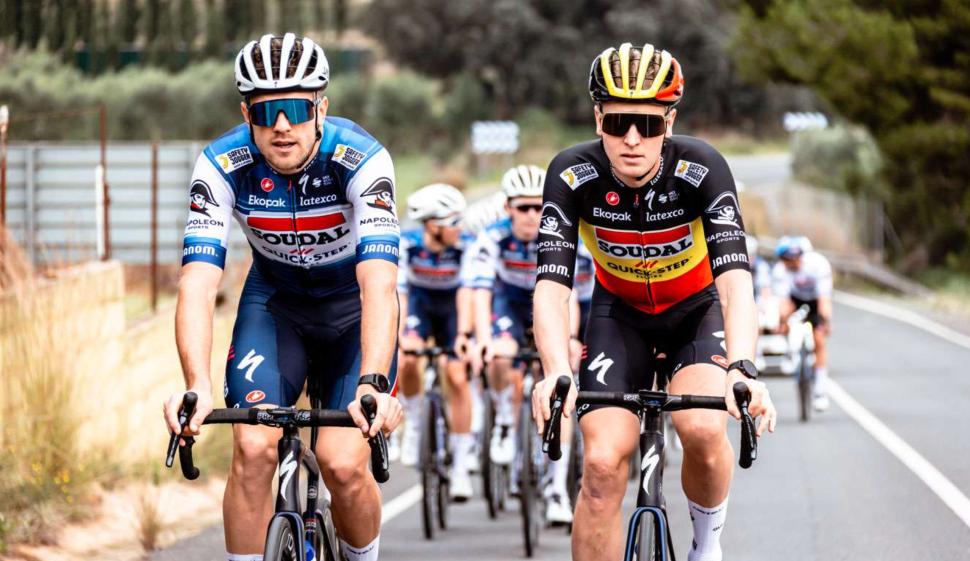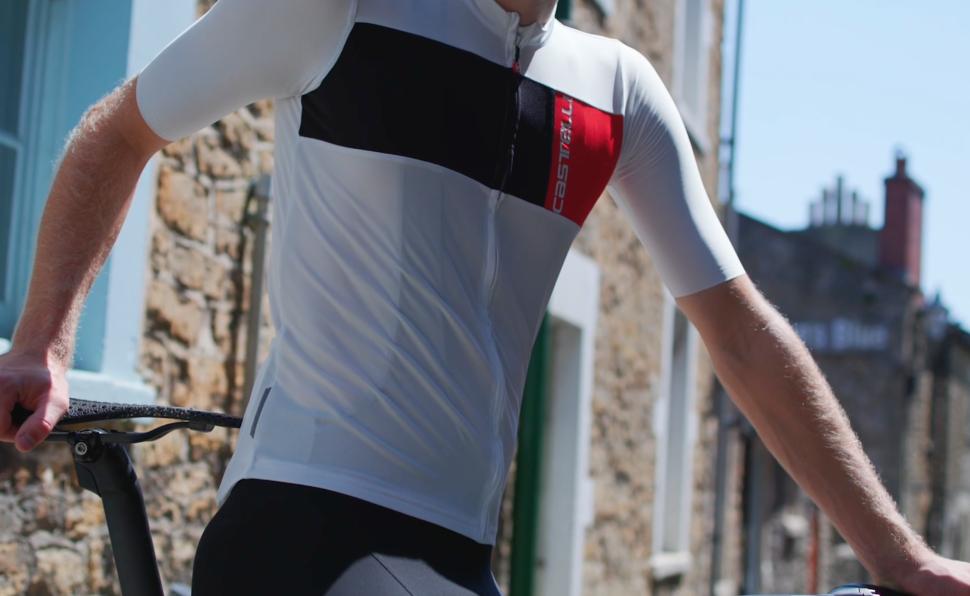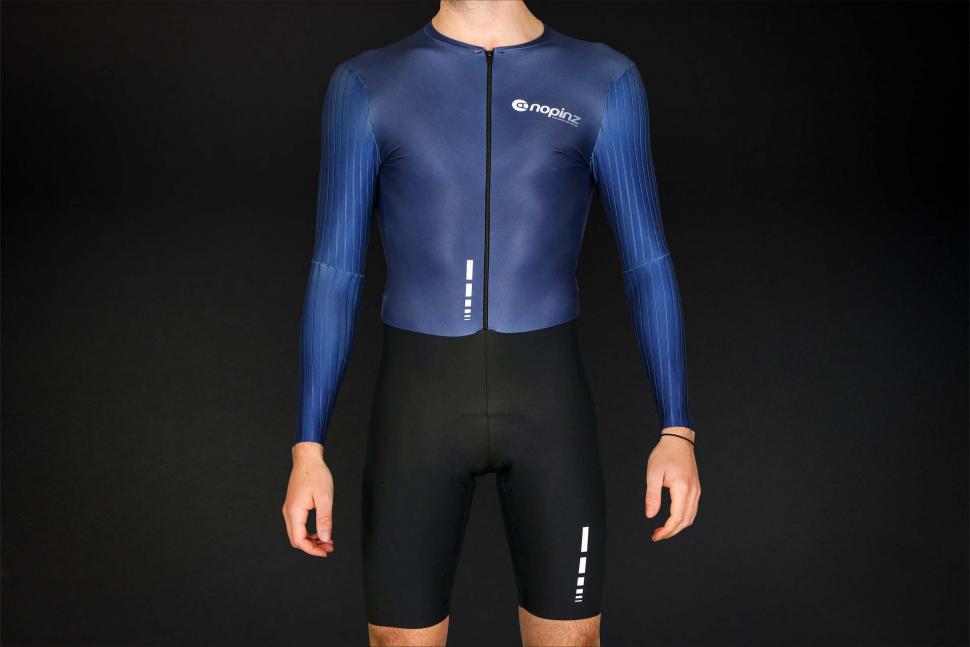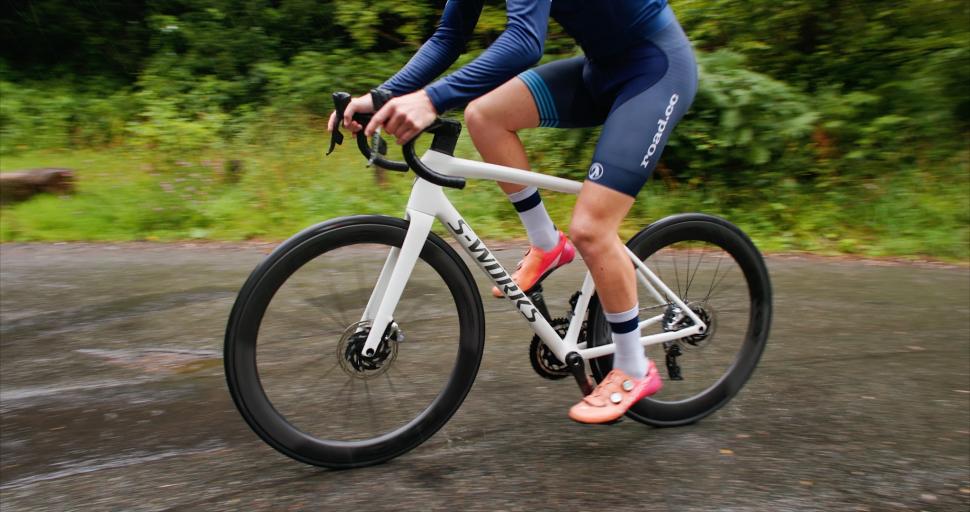- News
- Reviews
- Bikes
- Accessories
- Accessories - misc
- Computer mounts
- Bags
- Bar ends
- Bike bags & cases
- Bottle cages
- Bottles
- Cameras
- Car racks
- Child seats
- Computers
- Glasses
- GPS units
- Helmets
- Lights - front
- Lights - rear
- Lights - sets
- Locks
- Mirrors
- Mudguards
- Racks
- Pumps & CO2 inflators
- Puncture kits
- Reflectives
- Smart watches
- Stands and racks
- Trailers
- Clothing
- Components
- Bar tape & grips
- Bottom brackets
- Brake & gear cables
- Brake & STI levers
- Brake pads & spares
- Brakes
- Cassettes & freewheels
- Chains
- Chainsets & chainrings
- Derailleurs - front
- Derailleurs - rear
- Forks
- Gear levers & shifters
- Groupsets
- Handlebars & extensions
- Headsets
- Hubs
- Inner tubes
- Pedals
- Quick releases & skewers
- Saddles
- Seatposts
- Stems
- Wheels
- Tyres
- Health, fitness and nutrition
- Tools and workshop
- Miscellaneous
- Cross country mountain bikes
- Tubeless valves
- Buyers Guides
- Features
- Forum
- Recommends
- Podcast
feature
How much faster are shaved legs for cycling? Should you shave your arms too?
You might have seen our recent feature on things you can copy off the pros to make you faster and more comfortable on the bike. The downside to a fair few of those tricks, tips and components, however, is that they take not only a lot of time to perfect, but also a lot of money. If only there was a cheap way of making yourself faster, free speed if you like...
> Best road bike upgrades under £50
...there is, and it's shaving your legs of course! It's seemingly an absolute must in the pro peloton and for keen amateurs alike. Shaved legs are one of those things that have become so commonplace that we often don't stop to ask ourselves the reasons why.
Some riders claim that the benefits include more comfortable post-race massages, and better recovery if you lose skin in a crash, while others shave up just to satisfy their superstitions.
Of course, the primary reason that many riders claim they shave their legs is for aerodynamics - but how many watts can those pesky leg hairs really be saving you? And if shaved legs really are measurably quicker, then how come shaved legs aren't commonplace?
The lack of a wind tunnel makes this rather hard to answer, but luckily we know someone who's spent plenty of time in one and is well-equipped with spreadsheets and data to answer all of our silly questions.
Are shaved legs faster?
Xavier Disley, Founder of AeroCoach, has spent countless hours nipping and tucking the country's best athletes into honed wind-cheating machines.
He told us: "Shaving legs is faster. It's more aerodynamic.
"I know that there's reasons that people come up with, like it's better for massage and stuff. [But] from my perspective, it's aero."
"If you look at a rider from the front, the silhouette, and you look at the legs, which are effectively in free airflow, they're not behind anything. They're not at the back of the bike, your legs are much wider than the downtube of the bike. And if we said to you that we're going to cover the downtube of your bike in a layer of hair, everyone would be like, well, that's going to be far less aero, I'm not going to buy a hairy bike."
How many watts can shaved legs save you?
> Are expensive carbon wheels worth it?
Disley continues: "So if you take the surface area and the frontal area of the downtube of the bike, and you multiply that up by six, seven times, or something, that's what your legs are.
"So yes, getting rid of the hair on your legs is worth more than just putting aero socks on. Probably not as much as a [aero] jersey for most people, but at 30kph you're saving not fractions of a watt, you're saving five, six watts or so. And then that gets increased the faster you go."
With those kinds of numbers, it's no wonder that the pros, male and female, maintain such smooth legs! Disley went on to say that if you can, and don't find the process too onerous, then shaving your legs is free speed (or at least, only the cost of a cheap disposable razor).
How about shaved arms?
This raised the question that if shaved legs are quite so much faster and hair is quite so draggy, then how come we don't see more pro riders with shaved arms? Some certainly do it, but it's nowhere near as commonplace as shaved legs. Disley was able to shed some light on the question:
"Let's think about it in different scenarios", he says.
"If we have a time trial scenario, you can get away in nearly all situations with covering your arms with a long-sleeve skinsuit. And in most cases, the fabrics that you can choose for your suit that cover your forearm will be faster than bare skin.
"There are some instances where it doesn't really matter for some riders, and this depends a little bit on the angle of your forearm. Some riders prefer to have exposed arms because it's better for cooling.
"However, there are times when shaved arms can make a difference. For example, when on a road bike more of your forearm is exposed to the wind, and if you have really hairy arms then it could be a good idea if it's maximum watt savings you're after."
> How to get more aero without spending a fortune
How many watts shaved arms could save you depends not only on how hairy they are to start with, but on plenty of other factors such as how much of your arm is presented to the wind.
"Obviously, the more your arm is kind of presented to the wind, the bigger the potential savings," says Disley.
"The more vertical your arm is, if you're in the drops, or if you're holding the hoods with your arms straight. That's going to be a little bit different than if you have a breakaway position where you have your forearm parallel to the ground, for example."
Disley explained that it's seen as "a bit weird to shave your arms":
"I've done it for time trials before and found it a bit uncomfortable. And it doesn't feel as normal as shaving your legs because you don't do it all the time.
"I'd say that most people probably don't need to worry about it too much. But shaving your legs is a performance benefit that I think most people can get behind
most of the time, in most situations."
So, there you go, shaving your legs really will save you a fair few watts, and therefore, seconds. It’s not just so the pros can get more comfortable post-race massages...
Let us know whether you’re prepared to shave it off in the name of speed in the comments below...
Jamie has been riding bikes since a tender age but really caught the bug for racing and reviewing whilst studying towards a master's in Mechanical engineering at Swansea University. Having graduated, he decided he really quite liked working with bikes and is now a full-time addition to the road.cc team. When not writing about tech news or working on the Youtube channel, you can still find him racing local crits trying to cling on to his cat 2 licence...and missing every break going...
Latest Comments
- quiff 25 min 46 sec ago
That's going to life needlessly difficult when I want to (perfectly legitimately) filter through traffic or indeed get through my front door though...
- rct 44 min 22 sec ago
Also Bernard Hinault, although not in P-R, injuring his knee on the cobbles in the TdF that caused him to withdraw with tendonitis that affected...
- Car Delenda Est 56 min 16 sec ago
He's right: don't snitch
- Bmblbzzz 1 hour 1 min ago
Where are Zebedee and Ermintrude when you want them?
- Steve K 1 hour 14 min ago
Update on this: apparently it's all their Ti frames ever, except the HT Ti (no, no idea why). However, it's not transferable.
- Oldfatgit 1 hour 47 min ago
Cough *plotaroute.com*
- lonpfrb 1 hour 57 min ago
Sympathy is the least we owe Sir Bradley for his high achievement representing Britain. It takes a bit more life experience to understand the peaks...
- David9694 1 hour 59 min ago
Anger over Cornwall Council decision to offload 19 busy car parks...
- SimoninSpalding 3 hours 54 min ago
I have a Ragley Trig, which is steel, has masses of clearance plus everything needed for racks, mudguards. I have it set up with a 2x10 Campag...









Add new comment
20 comments
Froze is correct - all these ways & means of "saving watts" for racing folk amount to cheating, for the same reason that using an electric motor is cheating: technology gives you a watt-advantage over your racing rivals, which they don't have. If cycle racing is to be a true sport (measuring the relative abilities of the riders rather than the tech of their bikes and clothing) then the racers should all have exactly the same bike and clothing with the only difference being the size and fit to suit the size and body configurations of the racers.
But "sport" is now really a circus for advertising gew-gaws, innit?
For we non-racer cyclists, all means to save energy may be used without anyone cheating anyone else, since there's no competition. But this begs the question: when cycling, why do you want to "save" watts? Asked another way: why do you want to always go faster for the same power output?
Personally I like the feel of a bicycle that's efficient, comfortable and safe to ride (not too twitchy, too heavy for the brakes, etc.). I also want to be able to go anywhere on it, including steep hills on rough roads in the wet, etc.. I want it to be easily fixable and maintainable.
But I don't necessarily always want to go faster. I just want to enjoy the ride and not have it shortened by devoting a large percentage of my power output to heating up the bike or otherwise squandering energy rather than using it for going forwards. But it has to remain comfortable, affordable, fixable et al which might mean I won't have to care if it isn't as aero as possible or complete with exotic carbon wheelset costing twice the price of the rest of the bike.
Also, I don't want to have to contort and disfigure my body just to be a faster cyclist. Those hairs grow on your body for a good reason. Just ask Mr Darwin!
But they can have (quite) different bodies?
This is not the sport you are looking for...
So he could look more like a chimpanzee in satirical caricatures?
Sorry, but I having troubles believing all this saving watts stuff if you do this and buy that. I once figured it up calculating total watts saved if you buy all the gear, the bicycle, clothes, set in a particular position, etc and according to these companies watts claims a person could save about 100 watts...of course where they get you, especially on products, is that they say up to X number of watts, but I digress.
100 is a huge number, which means saving that kind of wattage would definitely be a noticeable improvement, this is about the same sort of wattage that the Vivax Assist hidden motor did for female pro racer Van de Driessche who won the race but lost due to the motor being discovered, and Froome was suspected of doing so the way he attacked and passed riders climbing like they were standing still up a steep grade. 100 watts is a huge deal, but there is a problem.
Since 1958 till now, the average speed of the TDF has only gone up about 3 1/2 mph, but the "biggest" change in speed came in 1985 with the introduction of the clipless pedals and since then the average speed has only gone up about 1 1/2 mph, a far less increase than 100 watts of saving would have seen.
But the story doesn't end there for in 158 the total distance of the TDF was 2,648 mile, in 1985 that figure drops a little to 2,553, not a big deal there, but in 2023 the miles raced was 2,115, and since 2018 the average miles raced was 2,107, modern races are running at least 400 miles less than they did just 35 years ago. Why did I bring up the mileage raced? Because the 1.5 mph gains we're seeing since 1985 is a direct result of the racers not being as tired because they are racing less miles, it has nothing at all to do with watts gained by technology. This is all marketing hype to get us to buy stuff, of course shaving there isn't anything to buy, but the point is the watts thing is nowhere near as big of a deal as marketing forces want you to believe...either that, or man is getting weaker over time, especially considering that in 1923 the TDF was on mostly gravel with some cobblestones, and those monsters raced like that for 3,570 miles! Even going back to the first mostly paved race in 1948 the riders road 3,058 miles. Since 1995 the average speed has been virtually flatlined, with some up and down times per year, the biggest spike was from doping, and of course grades climbed will alter that to some degree, but we're seeing 20 years of nothing happening to warrant saying technology is working.
So all the mph gains we have seen have been from clipless pedals, doping, and from less miles raced.
Why not just get an extra leg set and run shaved ones on your road bike and go hairy on the shopper / winter trainer?
Interesting. How come clipless pedals made such a difference (presumably compared to regular toe-clips and straps)?
The average times not changing much has got a huge amount to do with the parcours though, looking at 1985 there were five mountain stages and three hilly stages, this year there were eight mountain stages, five medium mountain stages and one hilly stage. Hard/impossible to find total elevation gained from back in the day but certainly my impression from watching it avidly from 1985 is that there are far fewer flat days and that the mountain days are far harder, with three, four or five Cat 1s and HCs in a day instead of one or two.
The unbearded have an obvious aerodynamic advantage. I expect to see more clean shaven roadies in the future and all those inefficient beardies will be left in the past where they belong!
Just the legs, you say?
0.5 watts less per squirrel over the average forest!
Rouleur-style squirrels can benefit even more.
If I can't break the 25 minute barrier on my club 10 next year I may have to resort to this...
I fear that, at the speeds I ride, wind in my unshaven legs is more of an assistance than a hindrance. Even in a headwind, I benefit from the some ricochet effect of the wind on its way back again.
I started racing and shaving when I was 12 and did that for 15 years. I got laughed at as a teenager a lot for that but non-cyclist know $h!t about life anyway so I never cared. 33 years on I only shave (my legs) for holidays and events but it feels kind of liberating every time as hairy legs still look and feel awful to me.
I only once shaved my legs (for racing) but looked like a great big babby, especially when the woollen shorts of the time could look rather like a nappy when dampened by the rear wheel showers. All I needed was a dummy to spit out!
It may be that I never really recovered from being a babby-man, despite my once more hairy aspects.
After a bit of a stack a few month's back I'm convinced a hairless leg faired better for convalescence... 🤷
I've have hairy legs and after unfotunate events (comming off) It has never effected my convalescence. If anything it has been an extra layer to slide before the tarmac has come in contact with the skin.
Hairy legs were a choice when I was younger though but now they are a must after chemo destroying my nerves and circulating my feet/ ankles get cold and numb enough without removing that extra layer of insulation.
You believe that you believe anything.
My wife has been clear for years that if I start shaving my legs our marriage is over. So they stay hairy...for now.
Nice to know there's not only an escape hatch if you need, it'll even help you get away faster...
I have never tried to shave all these areas, but I guess if I tried so it would take an enormous amount of time. If I spent this time exercising or cycling, I would be a much faster cyclist.
Unfortunately I am too lazy to do any of these scenarios, so I remain slow. But missus is happy.